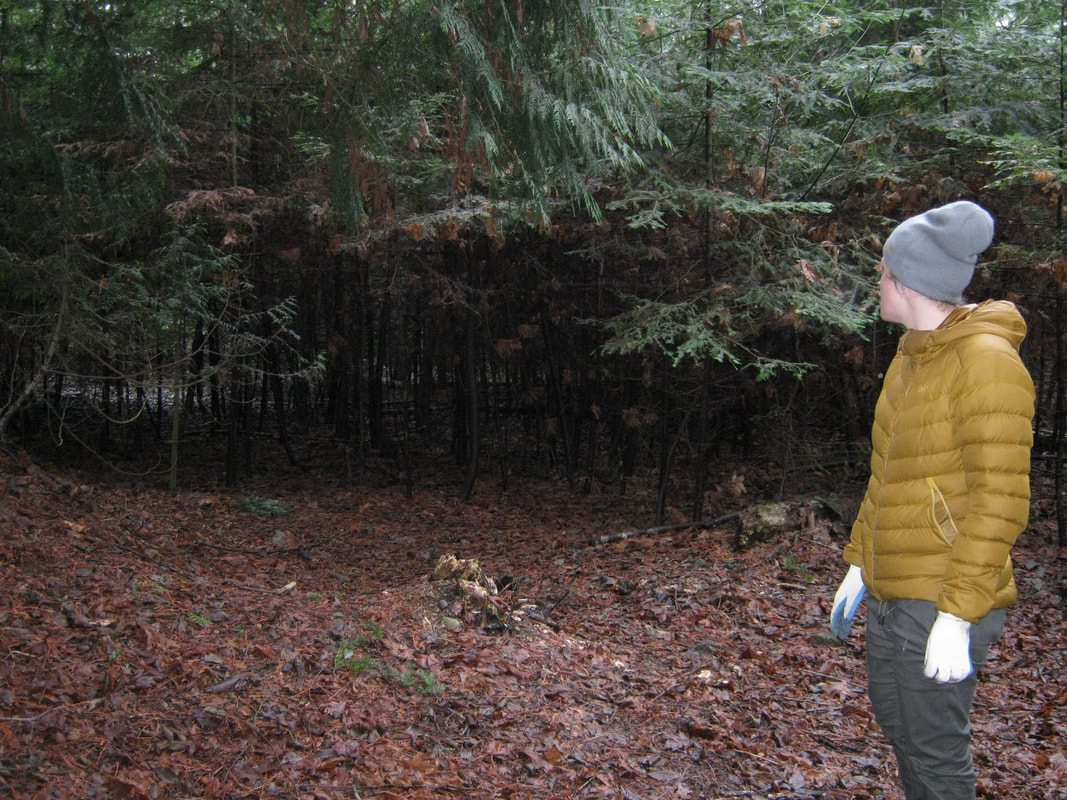Our group has a nice rhythm of spring/summer invasive removal and fall planting. This has the goal of increasing biodiversity, stabilizing the stream banks to prevent erosion, and restoring the plant communities that were here pre-disturbance.
We are learning that it's not as simple as putting plants in the ground. Despite best efforts at placement, some plants get trampled, browsed by deer, suffer from summer drought, or don't make it for unknown reasons. We've learned that ferns and Oregon grape are nearly indestructible, though they haven't survived well on the steep slope stabilization projects. The key seems to be considering which plants need "wet feet" - salmon berry and Cedar, for example, and which ones can tolerate drier conditions - snow berry and pine. Then adding lots and lots of bark mulch and wood chips to hold onto moisture and nutrients in our dry summers. Even still, not all the plants survive. We keep planting densely, using chicken wire and Plantskydd to deter the deer, and repeating planting as we assess what's surviving. It makes us grateful for the established trees that are there, and appreciate the truth in the saying, "The best time to plant a tree is 20 years ago. The second best time is now."
0 Comments
|
Categories
All
Archives
March 2024
|



 RSS Feed
RSS Feed
